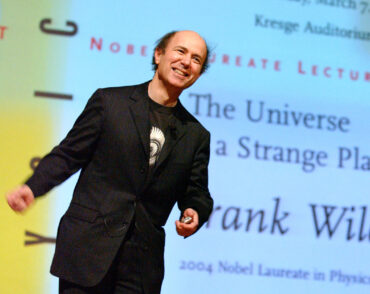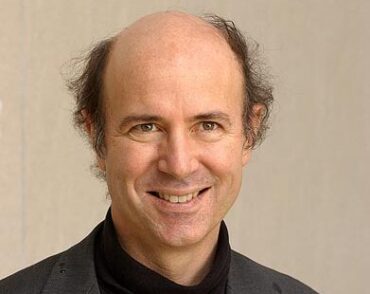
The World According to Freeman
The physicist Freeman Dyson, who died in late February, believed that scientific ingenuity would find a
way to save the planet.
Freeman Dyson, who died Feb. 28 at the age of 96, was one of the smartest people I’ve ever known, and one of the sweetest. For several years I occupied the office directly under his at the Institute for Advanced Study in Princeton, N.J. The sound insulation was good but not perfect: Ordinary conversations were inaudible, but when Freeman talked on the telephone he spoke louder, and I could hear him then, though I rarely made out specific words. (Actually, I tried not to.) What did penetrate, reliably, was his laughter. It was a frequent, welcome source of joy.
Freeman made many fundamental contributions in physics and mathematics, but in the last years of his life he expressed some doubts about the significance of carbon dioxide emissions and climate change, which put him at odds with most of the scientific community, including myself. Unfortunately, this is now the main thing that many people know him for. Here I will try to frame the scientific issues at stake, in a way I think he might approve.
An average human adult consumes about 2,000 calories a day in food. That is roughly enough energy to run a 100-watt lightbulb continuously. Today, human beings use about 25 times that much energy per capita, including as fuel and electricity. In the U.S., the average is more like 95 times. This is a rough but objective indicator of how far our economy has advanced over bare human subsistence.
Using the energy needed for subsistence as our unit, the Sun’s energy output corresponds to some 500 trillion units per capita for the current world population. Of course, the Sun’s output gets radiated into space in all directions. To capture a big fraction of it, we’d need to put gigantic collection devices in space surrounding much of the Sun. Freeman thought about engineering projects of that sort, known as Dyson spheres. Hypothetically, they could support a much bigger economy and a much larger population than we have today.
If, more modestly, we restrict ourselves to the solar energy that reaches Earth, then we find “only” about 10,000 times our current energy consumption. Still, that should do for quite a while. This is the basic reason why sustainable solar energy is extremely promising as a longterm solution to human energy needs. We can put some absorbing panels on Earth and others in space, and gradually work toward a full Dyson sphere if the need arises.
Thus, Freeman believed, with the growth of technology our energy problems will solve themselves. He also had a heterodox view of carbon dioxide, which most scientists see as the chief culprit behind global warming. Freeman loved the idea of growing more trees and lusher vegetation—for food, shelter and spiritual nourishment—so he had a soft spot for carbon dioxide, whose abundance promotes photosynthesis. Freeman’s congenital optimism and visionary tendencies emboldened his brilliance. But they led him, I think, to underestimate the importance and danger of abrupt changes in Earth’s climate due to fossil fuel burning in the meantime.
If you would like to get a sense of what it was like to know Freeman, and to hear some wonderful stories and ideas, I strongly recommend that you sample his interviews at the Web of Stories website. When you talked to Freeman, he listened, and he often responded with a twinkle in his eye, especially when he had a chance to surprise or contradict you. It’s an unusual style. I’ll miss him.
Originally appeared on March 19, 2020 on The Wall Street Journal website as ‘The World According to Freeman‘
Frank Wilczek is the Herman Feshbach Professor of Physics at MIT, winner of the 2004 Nobel Prize in Physics, and author of the books Fundamentals: Ten Keys to Reality (2021), A Beautiful Question: Finding Nature’s Deep Design (2015), and The Lightness of Being: Mass, Ether, and the Unification of Forces (2009).


